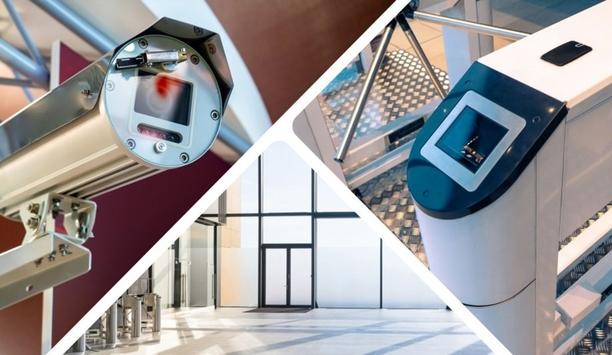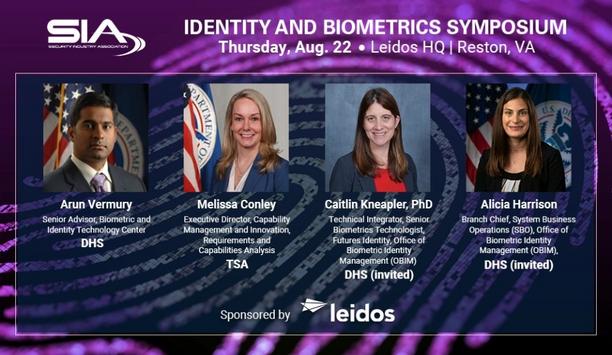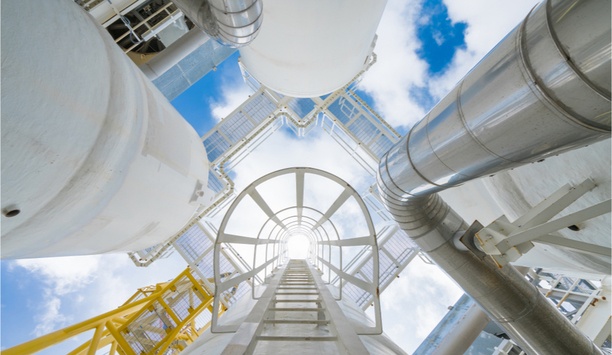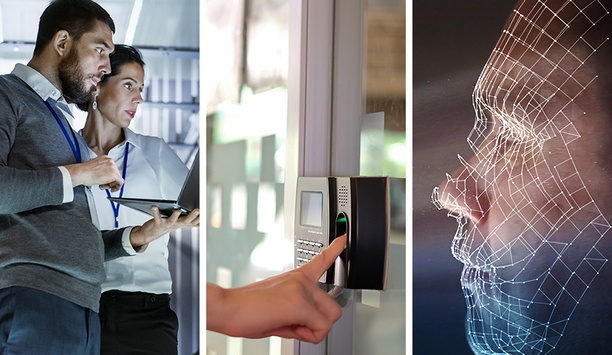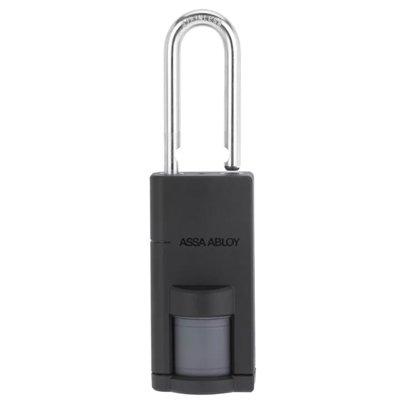Which Technologies Will Disrupt The Security Industry In The Second Half Of 2020?
Editor Introduction
The first half of 2020 has been full of surprises, to say the least, and many of them directly impacted the physical security market. The COVID-19 pandemic created endless new challenges, and the physical security market has done our part to meet those challenges by adapting technology solutions such as thermal cameras and access control systems. In the second half of 2020, we can all hope for a return to normalcy, even if it is a “new normal.” In any case, technology will continue to play a big role. We asked this week’s Expert Panel Roundtable: Which technologies have the greatest potential to disrupt the security industry in the second half of 2020?
The global pandemic has led to a rapid digital transformation of our industry as people are having to quickly embrace technology to ensure business continuity, and this trend will only accelerate during the rest of 2020. Only a few years ago, the “inevitable shift” to all things cloud was met with guarded optimism. But today, when remote working requires solutions that employees can access from anywhere, the shift is really happening. The flexibility of these easily accessible software solutions demonstrates their value immediately. We are also seeing customers making clever use of their existing technology to perform new functions to solve some of the challenges posed by the pandemic. Working hand in hand with developers, they are using, re-purposing and enhancing their security technology to monitor occupancy levels, keep track of people’s potential exposure to contagion or contaminants, controlling access to PPE equipment, monitoring patients at a distance, and more.
Following recent unexpected events, this year the spotlight will not necessarily be on disruptive technologies, but on those that can add the greatest value. In my view, one of these is artificial intelligence, as I believe it’s starting to warrant the hype. A crucial barrier to AI adoption was the fact that no one knew what it was capable of, and used the term too broadly – using AI, machine learning and deep learning features interchangeably, confusing matters. But, in times when costs need to be contained and automation is vital, AI is the perfect solution when combined with video analytics. AI can be trained to alert security staff of suspicious activity, learning the difference between real threats and innocuous events, eliminating false alarms and turning a reactive, reviewing activity into a dynamic, proactive one; with personnel able to add value elsewhere – maximizing efficiencies across teams.
The second half of 2020 will undoubtedly be about security systems that help to deal with the issues and the aftermath of the COVID-19 pandemic. It is inevitable that some of the most prominent technology will be temperature-sensing systems (either using CCTV cameras and video management software or access control reader points) to track and trace the movement of potentially infectious individuals. Additionally, with the greater awareness of social distancing requirements and a strong desire to avoid further peaks in the infection rates, technology centred on counting persons within a facility will become increasingly in demand. In addition to video analytics for people counting, there will be sensing technology that accurately assesses the movement of people in and out of a specified area. As governments seek to limit the numbers of people in confined spaces, organizations will need both to monitor this, and also to prove numbers for auditing.
Customers increasingly are deploying surveillance solutions not only for security purposes, but also for business intelligence. AI-enabled, IoT-connected security ecosystems have become the new standard for smart applications for large enterprises. These data hungry applications have resulted in increased data stream speeds, real-time data analysis and extended archival times. These demanding environments have fundamentally disrupted the way customers approach storing data and have led to a greater need for scalable storage systems built for tomorrow. In the second half of 2020, we’ll continue to see greater adoption of robust storage solutions that increase performance, reduce latency and ensure high data availability. This includes storage solutions with an edge-to-cloud architecture, where AI-enabled network video recorders (NVRs) sit on the edge to deliver immediate insights and enterprise storage systems in the backend that hyperscale to petabytes of data for long-term video retention and deep learning.
Without a doubt, COVID 19 has been the biggest disruptor to the security industry this year. Effective immediately, end-users want to move away from contact-based security and access control systems to a touchless, friction-free process to minimize the chances of spreading or catching the virus. Fortunately, there’s proximity and biometric technology available today that can verify a credential or identity and activate a security entrance to unlock or open its barriers – completely touchless. But, there’s something to watch out for – many buildings today have manual swinging doors on the exterior and throughout the building corridors, and facility managers will see a quick fix here: to install low-energy, automatic door operators to create “touchless” swinging entrances. Unfortunately, automatic operators were designed to move slowly for ADA-accessible entry. The door, in some cases, can remain open a total of 8 to 10 seconds, creating a greater risk of tailgating.
The cloud has the greatest potential to disrupt the security industry in the second half of 2020 due to the ways that end users are looking to deploy the solution. Though “disruptions” can be negative, we simply mean that solution providers will need to revisit their business models to provide a more specialized approach to system design. For example, organizations that are waiting for advancements in bandwidth and storage costs are still using the cloud, but on a limited scope. Rather than a complete on-premise or cloud solution, many organizations choose to use a hybrid of sorts, which allows them to use the cloud for what it does well: processing heavy functions like video analytics. To adapt to this change, companies will need to re-focus and see where they can leverage other technologies in conjunction with the cloud to provide proactive, as opposed to reactive, security measures.
The second half of 2020 will see edge intelligence addressing the “new normal,” as we begin to reopen facilities and lift quarantine restrictions. The ability to run AI-enabled analytics directly on embedded devices to solve problems at the edge will enable the world to get back to work in a safe and secure manner. For example, innovative companies are quickly developing face mask detection, social distancing and other analytic apps for surveillance cameras, designed to monitor the changing social landscape so the economy can get back to work again.
As the situation stands right now, the security industry is leaning heavily towards customized applications dealing specifically with pandemic-related solutions. We are, of course, seeing an increase in different initiatives around body temperature scanners and other similar technologies. As such, video analytics are accelerating to promote and meet expectations of these, and other smart technologies designed to provide automated efficient assistance in various scenarios. This is leading to an increased investment in analytics, as people search for solutions and companies look to adapt to the new normal, reopen economies and get their infrastructure up and running again. The other side to this is, given the slow-moving reopening procedures, the tech innovation side of the industry could be impacted, as time goes on and the pandemic overshadows all else.
As businesses implement new protocols in response to COVID-19, there has been unprecedented demand for thermal cameras for elevated skin temperature screening. FLIR alone sold $100 million worth of orders for thermal cameras for elevated skin temperature in the first quarter of 2020, and we have seen significant deployment of our thermal cameras at critical facilities in the second quarter such as at General Motors plants and the Pentagon Visitor Center. Thermal is the trending technology in the security industry right now. As more providers enter the thermal market, it will be imperative for customers to distinguish proven cameras from other options. Key camera differentiators for elevated skin temperature screening include those that are both registered with the U.S. Food and Drug Administration and are ONVIF-compliant. We anticipate greater adoption of thermal cameras both at the perimeter for intrusion detection and inside facilities for condition monitoring.
Editor Summary
There's nothing like a global pandemic to disrupt an industry such as physical security. However, amid all the disruption in the first half of 2020, there was plenty of opportunity for our industry's technologies to find new uses in a changing world. Changing needs beget changing technologies, although the current trends toward cloud computing, touchless access control systems, and AI-driven video analytics already seem particularly well suited – almost responsive – to the new set of challenges. Driven by technology, the physical security market has managed to survive the first half of 2020. In the second half of the year, we can thrive.
- Related companies
- Boon Edam
- TDSi
- Verint Systems
- Genetec, Inc.
- FLIR Systems
- VCA Technology
- Seagate Technology
- ONVIF
- Related links
- FLIR Systems Video Surveillance software
- Genetec Access control software
- Genetec Video Surveillance software
- TDSi Access control software
- TDSi Surveillance cameras
- TDSi Access control systems & kits
- TDSi Video Surveillance software
- Verint Video Surveillance software
- TDSi Access control readers
- View all news from
- Boon Edam
- TDSi
- Verint Systems
- Genetec, Inc.
- FLIR Systems
- VCA Technology
- Seagate Technology
- ONVIF
Expert commentary
Security beat
Security bytes
- Getting To Know Dan Grimm, VP And General Manager Of Computer Vision At RealNetworks
- Big Wins And The Importance Of Showing Up: Insights From SecurityInformed.com Editor Larry Anderson
- Setting Goals, Business Travels And Radioactivity: Success Secrets From Tiandy's John Van Den Elzen
- Getting To Know Jeff Burgess, President/CEO At BCDVideo
The Security Challenges Of Data Centers
DownloadSecurity Practices For Hotels
DownloadAccess Control System Planning Phase 2
DownloadSIA Identity and Biometrics Symposium
DownloadGunshot Detection
DownloadASSA ABLOY Aperio P100 Padlock
Climax Technology TouchPanel-3
ASSA ABLOY eCLIQ Electronic Key For Enhanced Building Security












